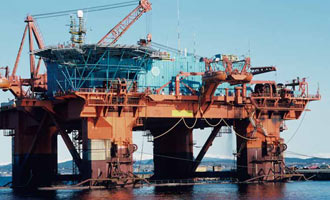INSIGHTS
Our present world relies heavily on both oil and gas to sustain our required levels of daily energy consumption. Despite the recession and the recent debates regarding extensive oil usage due to both economic and environmental concerns, the oil and gas industry continues to grow and expand while reliable alternative sources of energy have yet to be found. According to PricewaterhouseCoopers in the U.S., a total of 39 business deals within the oil and gas sector were reported and made in a span of three months since July 2010, with a value totaling US$17.6 billion. Due to the combustible nature of oil, gas and other chemicals, these facilities must be fully equipped to prevent a disaster. A fully integrated system can allow for faster response times during emergencies. Everyone who enteres and exits the facility must be fully authorized by means of a secure access control system since these facilities are prime targets for sabotage. Should an accident or miscalculation occur, it can result in a tremendous loss of life as well as negatively affect both the business and the environment, as seen in the disastrous Macondo well leak.
Preventing Disaster in Petrochemical Facilities
Date: 2011/05/10
Source: The Editorial Team
However, monitoring systems can be placed in some critical areas, but the whole pipeline infrastructure is difficult to cover, Liong said. When underwater, these pipelines are vulnerable to attacks and using high-speed submarine drones to inspect such lines does not offer full protection, Songe-Moller said.
Off-shore drilling rigs can also be hard to monitor. “They are generally remote from readily available WAN options, making monitoring the security architecture from a distance more challenging,” Karas said. “These rigs are also mostly in hostile environments from the perspective of mounting cameras, which may be prone to getting damaged by moving equipment, or having their view obscured by salt-spray, machine oil, or general dirt and contaminants.”
 New Trends
New Trends
In oil and gas facilities today, it is recommended that thermal imaging cameras with video analytics be used in indoor, outdoor and low-light facilities — both for security surveillance as well as environmental analysis, such as gas leakage and fire, Liong said.
Video intelligence will become more widely deployed. “Video analytics have become reliable and cost-effective enough to be used in any environment. This allows companies to augment their own security teams, resulting in tighter security with fewer resources,” Karas said. “When the security camera is also the security sensor, you can cut down on total equipment deployed and get an instant video verification of every event, without having to set up complex cross-device integrations or connections.”
Megapixel network cameras will be used in new projects as the technology improves. “Advanced cameras can perform video analytics onboard the camera, as well as store several weeks of continuously recorded video within the camera itself,” Karas said. “These technologies allow for the deployment of multimegapixel cameras that can utilize the same cable and switch/router infrastructure of traditional IT devices while interoperating with other IT/IP devices. When it is no longer necessary to stream video back to a server for analysis or recording, several deployment opportunities, such as the use of cellular data networks for monitoring, can be more easily achievable.”
Securing oil and gas facilities requires advanced planning from a holistic point of view, as it is necessary to consider all the possible weaknesses and provide a fail-proof system. The safety of these large critical infrastructures will continue to grow stronger as new devices combat common problems more effectively.